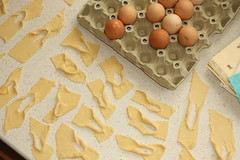
I tried the Labriole Saint Mont 2006 wine in Paris. It was recommended to me by a waiter from the “Cremerie Restaurant Polidor” restaurant. I heard about this wine for the first time and I wasn’t sure if it is from southwestern France.
After I came back home, I found this wine area in the Internet. Mont Saint is the area to the east of the town of Auch. This wine area is a part of the Gascony region in France. There are wonderful landscapes with plenty of streams, lush valleys, forests, vineyards and small towns with timbered houses that look like the ones from medieval times. I know Gascony from Aleksandra Dumas' books about d'Artagnan. I heard about the local brandy called Armagnac but I had never drunk wine from there.
I was impressed with the taste of the Labriole Saint Mont 2006 read wine. The glass reveals nice purple glow. Flavours are clean and vinous. In the first sip I found the blackcurrant flavour. Sweet fruit and pleasant acidity makes the wine ideal for food. I don't have the slightest doubt that it is the grape of the highest quality.

This wine contains about 70% of Tannat grape. Tannat is a kind of red wine grape, which has sharp taste and is rich in tannins. In the past wine made only from these grapes wasn’t popular. The name of main grape may be one reason. The word resembles tannin, ie tannins. But modern winemakers know how to select grapes and to make good wine, so now wine rich in tannins is soft to drink. It is important to do this by master of discipline, because the law requires that he/she has to add at least 70% of Tannat grapes. This rule has been introduced to preserve local characteristics of wines.

In modern Gascony it is statutory for wine to consist of 70% of Tannat. The rest is cabernet. There is a small label that shows that the grapes are handpicked . Fermentation and storage occur in steel tanks to preserve the best fruit flavors. So, the wine coming from Saint Mont contains a lot of nice secrets for me. They are worth being discovered .











